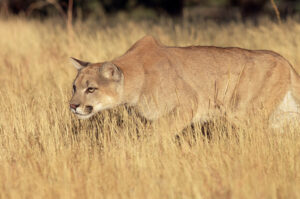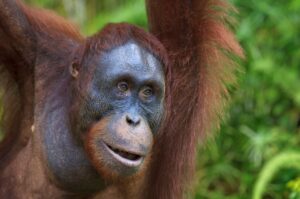A passion for the natural world drives many of our adventures. And when we’re not actually outside, we love delving into the discoveries about the places where we live and travel. Here are some of the best natural history links we’ve found this week.
Dolphins identify friends by tasting urine: Marine biologist Jason Bruck wanted to study whether dolphins use signature whistles in the same way that we use names. Instead, he found that dolphins taste urine to identify their pals.
Previous research showed that wild dolphins swim through each other’s urine. Bruck decided that there must be a reason for this. He and his colleagues discovered that captive dolphins taste urine to identify their family and friends.
As they evolved, dolphins lost their sense of smell but their sense of taste is still excellent. Bruck placed the dolphins into different pools, then added samples of urine from known and unknown dolphins.
The dolphins spent three times longer investigating the familiar urine. Researchers then combined familiar urine with whistles to see if dolphins used both for ID purposes. They do. The dolphins paid relatively little attention to whistles and urine that clashed. But if they heard a whistle that matched the urine, they explored the pool, looking for their friend.
DNA from Pompeii
The Pompeian human genome: Researchers studying the remains of Pompeii have been extracting DNA from the bones of a woman and man. They have almost completed the first Pompeian human genome.
The eruption of Mount Vesuvius destroyed this Roman city in AD 79. The perfect preservation of bodies in ash has given insight into the health of the victims. Archaeologists found this particular pair in 1933 but have done little research on them until now.
Neither person seemed to be fleeing the city. Instead, they were sitting in a dining room. Why were they not fleeing, like some other figures from Pompeii? Scientists suggest that the couple may have been in poor health. They are now looking at their DNA to confirm whether this is the case.
The male DNA indeed contains tuberculosis-causing bacteria. While analyzing this, scientists realized that the bone at the base of his skull contained enough intact DNA to work out the couple’s entire genome.

The ruins of ancient Pompeii. Photo: Shutterstock
Cool sharks
Why sharks matter: Jaws is one of the most iconic modern films in modern history, and it has created the myth that sharks are terrifying predators. Warning signs litter some beaches, shark-sighting apps advise you in massive lettering to “stay on shore”.
Conservationist David Shiffman is not denying that sharks are predators, but he wants people to realize the minimal risk they pose. “[From] 1990 to 2006, 11 Americans were killed by sharks, while 16 died by falling into holes on the beach,” he points out archly.
Shiffman insists that fearing sharks is foolish and that failing to understand their low risk is hampering conservation efforts. He wants to boost these efforts by showing people how cool these cartilaginous fish are. For example, they predate dinosaurs, trees, and Saturn’s rings; some have glow-in-the-dark gums to lure their prey; some can even perform parthenogenesis (reproduce from an unfertilized egg).
‘Tricking’ a wayward orca
Orca sounds guide lost whale back to sea: Since May 16, a killer whale has been stranded in France’s Seine River. It first appeared in the port of Le Havre, then traveled upstream to Rouen. After weeks in freshwater, the orca’s health has rapidly deteriorated.
Marine mammologists are trying a novel solution to guide the whale back to the ocean without potentially hazardous boats. They are using a drone to monitor the whale and also to emit orca recordings. They hope that the orca will follow the sounds of its kin back to the sea.
Antibiotic-resistant bacteria found in Antarctica: Bacteria in Antarctica have antibiotic and antimicrobial resistance. This is likely because they have evolved in extreme conditions.
But scientists are concerned that if these bacteria spread beyond the White Continent, hardy new infectious diseases may spread worldwide. Though they have not found any disease-carrying species, the bacteria are sources of certain resistant genes, which can transfer to other, more dangerous bacteria.
With climate change, soils that formerly held these microorganisms in a deep freeze have now thawed. These highly resistant bacteria are currently a critical threat to human health. Some of these bacteria can resist 10 different types of antibiotics.

Chimpanzees link sounds to communicate. Photo: Shutterstock
Chimps combine a few sounds into hundreds of ‘words’
Chimpanzee language secrets: How have we evolved such complex languages when all other animals communicate more simply? Our ability to build complex words, sentences, and concepts does not come from the number of sounds we can make, but from our ability to join these sounds into an almost infinite number of combinations.
Though their vocalizations are much simpler, chimpanzees are giving insight into these building blocks of language. Chimps can make 12 different call types. They then combine these into vocal strings. Their ‘language’ is actually much more complex than anyone realized. Chimpanzees can combine up to 10 calls into hundreds of different sequences.





